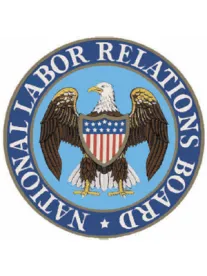As we previously reported, the National Labor Relations Board (“NLRB,” or “the Board”) decided last month in McLaren Macomb, 372 NLRB No. 58, that an employer commits an unfair labor practice (“ULP”) when it presents a non-supervisory employee with a severance agreement containing broad confidentiality and/or non-disparagement provisions. The Board reasoned that even proffering an agreement with such terms has a reasonable tendency to interfere with or restrain the prospective exercise of protected rights, both by the separating employee and those who remain employed, to engage in concerted activity for their mutual aid and protection. In the aftermath of the decision (which is still subject to federal appellate court review), employers struggled with how to respond. Should they scrap existing form severance agreements altogether? Strip them of confidentiality and non-disparagement terms? Amend confidentiality and non-disparagement terms, and if so, how?
In the midst of this uncertainty, on March 22, 2023, the NLRB’s General Counsel Jennifer Abruzzo (GC) issued a memorandum, Memorandum GC 23-05 (the “Memorandum”), ostensibly aimed at assisting Regional NLRB Directors and their staff “in responding to inquiries from workers, employers, labor organizations, and the public about implications stemming from” McLaren Macomb. But rather than clarifying employer obligations, the Memorandum complicates matters further. All of the following reflects the GC’s interpretation of the McLaren Macomb decision as set forth in the Memorandum:
Employers can continue to present employees with (lawful, compliant) severance agreements. The GC confirmed that employers can continue to offer severance agreements to employees as long as “they do not have overly broad provisions that affect the rights of employees to engage with one another to improve their lot as employees.” However, severance agreements that interfere with the rights of employees to engage with the Board, their union, judicial or administrative or legislative forums, the media, coworkers, or other third parties are unlawful, whether or not there are circumstances surrounding the proffer that show animus toward protected activity or otherwise coercive or unlawful conduct by the employer. The mere offer of a facially overbroad severance agreement – even if the employee does not sign it – is a ULP.
McLaren Macomb will be applied retroactively, and not only to severance agreements. Employers questioned whether the Board would only apply McLaren Macomb prospectively, or whether they may be subject to ULP charges with respect to existing severance agreements that conformed with Board precedent regarding non-disclosure and non-disparagement clauses when they were drafted (e.g., Baylor Univ. Med. Ctr., 369 NLRB No. 43 (2020) and IGT, 370 NLRB No. 50 (2020)). The GC warned that McLaren Macomb “has retroactive application,” and that applying its reasoning retroactively would not result in “manifest injustice.” In fact, not only will new proffers of facially overbroad severance agreements be subject to the NLRA’s six-month statute of limitations, but timely ULP charges based on employer attempts to enforce a previously entered unlawful severance agreement will not be time-barred, regardless of how long ago the parties signed the severance agreement.
Were that not enough, the GC writes that the Board will apply McLaren Macomb to “any employer communication to employees,” such as pre-employment offer letters. Any communication that would tend to interfere with, restrain, or coerce future, present, or past employees’ exercise of Section 7 rights is in the Board’s crosshairs. In fact, the GC warns that she “believe[s] some other provisions … in some severance agreements might interfere with employees’ exercise of Section 7 rights, such as: non-compete clauses; no solicitation clauses; no poaching clauses; broad liability releases and covenants not to sue that may go beyond the employer and/or may go beyond employment claims and matters as of the effective date of the agreement; cooperation requirements involving any current or future investigation or proceeding involving the employer …, such as if the employee was asked to testify against co-workers that the employee assisted with filing a ULP charge.” In sum, the GC has announced a Board policy to scrutinize all manner of contractual terms that even remotely touch upon Section 7 rights.
If non-disclosure/non-disparagement terms are readily severable, only the offending terms will be voided. The GC clarified that if the Board determines a severance agreement contains unlawful provisions, it will seek first to have those terms voided out as opposed to invalidating the entire severance agreement, whether or not the agreement contains a severability clause. Employers can therefore assume that past severance agreements are not invalidated in toto by McLaren Macomb, but they may still be subject to a meritorious ULP charge for proffering the overbroad terms in the first instance (if timely), or for seeking to enforce such terms.
The Board will protect the Section 7 rights of former employees to the same extent as current employees. Underscoring the Board’s “Congressional mandate to address the inequality of bargaining power between employees … and their employers” and to “act in a public capacity to protect public rights to effectuate the public policy of the [National Labor Relations Act (“NLRA”)],” the GC justifies the Board’s purported duty to regulate what would otherwise be the right of parties to make private contracts. The GC does not confine the Board’s duty to regulating future severance agreements but also confirms its duty to protect the rights of former employees. Relying on both the NLRA’s definition of an “employee,” which is not limited to persons in a current employment relationship, and on the valuable role that former employees can play in providing evidence to the Board and other third parties regarding their working conditions, the GC warns that it will treat as a ULP any attempt to preclude current or former employees from engaging in conduct for their mutual aid and protection. This is true even with respect to confidentiality and non-disparagement provisions that employees may request of employers.
McLaren Macomb does not impact confidentiality and non-disparagement provisions applicable to supervisors. Supervisors who possess the authority to hire, fire, promote, lay off, impose discipline, or take other supervisory action with respect to employees are not “employees” under the Act. Although some limited provisions of the NLRA apply to supervisors (e.g., protection against retaliation), the GC confirmed that McLaren Macomb does not impact confidentiality and non-disparagement provisions used in severance agreements with supervisors.
Is there any silver lining? Employers may rightly be asking if there are any bright spots in the GC’s Memorandum, and there are a few (sort of).
First, in addition to reassuring employers that past severance agreements are not voided in their entirety, the GC acknowledges that employers can still include narrowly tailored confidentiality and non-disparagement provisions in severance agreements. Confidentiality clauses should be limited “to restrict the dissemination of proprietary or trade secret information for a period of time based on legitimate business justifications,” while non-disparagement provisions should be “limited to employee statements about the employer” – as distinguished from “parents and affiliates and their officers, representatives, employees, directors and agents” – “that meet the definition of defamation as being maliciously untrue, such that they are made with knowledge of their falsity or with reckless disregard for their truth or falsity.” However, since this definition merely parrots the common law definition of defamation, which is prohibited regardless of contractual obligations, non-disparagement provisions palatable to the GC add little of value.
Second, the GC noted that “savings clauses” may help a little but will not cure overly broad provisions. The GC suggests incorporating the “model prophylactic statement of rights” that she drafted for the Board (but which it has not adopted), “which affirmatively and specifically sets out employee statutory rights and explains that no [contractual provision] should be interpreted as restricting those rights.” Doing so, she suggests, may “mitigate the potential coercive impact of” overbroad non-disclosure/non-disparagement terms “on the exercise of Section 7 rights and simplify compliance,” the same way that such disclaimers in an employee handbook may reduce the coercive effect of overbroad workplace rules. However, the GC’s model statement outlines at least nine substantive examples of protected concerted activity, making it not only unwieldy but a guide to substantive employee rights, including, among other things, the right to organize or join a union, complain to a government agency, and strike and picket. What mitigating effect a narrower savings clause – i.e., one without an NLRA primer – may may have remains unclear from the Memorandum, but the GC encourages employers to review NLRB Operations Management Memorandum OM 07-27, which provides guidance on terms that should and should not be included in non-Board settlement agreements and is consistent with McLaren Macomb.
Finally, the GC suggests that the Board may be more likely to consider a merit dismissal of a meritorious ULP charge that is solely based on the proffer of an “unlawful” severance agreement if an employer notifies its former employees that the overbroad provisions in their severance agreements no longer apply. “[W]hile it may not cure a technical violation of an unlawful proffer,” the GC cautions, “employers should consider remedying such violations now by contacting employees subject to severance agreements with overly broad provisions and advising them that the provisions are null and void and that they will not seek to enforce the agreements or pursue any penalties, monetary or otherwise, for breaches of those unlawful provisions.” We doubt many employers will heed this advice (for good reason).
Although the Memorandum heralds little good news for employers, it is further proof that the currently constituted Board is vigorously pursuing labor practices that may even tangentially chill protected activity. Employers should be sensitive to the current activist Board environment and work with skilled labor counsel as they continue to draft labor and employment policies and agreements.





 />i
/>i
